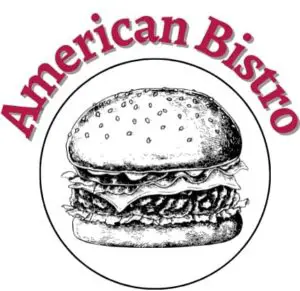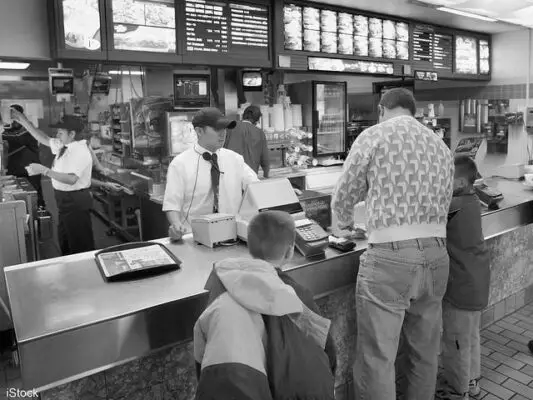The biggest chain of fast food restaurants in the United States is McDonald’s. Its popularity is due to several factors. People eat there because it is convenient and cheaper than eating out. It’s also located in areas with few food choices. Despite fast food’s apparent benefits, we must ask ourselves why we need many of these restaurants.
McDonald’s is the most popular fast food chain in America.
According to recent research, McDonald’s is the most popular fast food restaurant in the U.S. With over $40 billion in sales; it is easily outselling rival Starbucks. Its growth has been accompanied by increased consumer awareness about the quality and value of its products. McDonald’s is an excellent choice for a fast lunch or dinner, whether you’re craving a burger or a milkshake.
McDonald’s began in San Bernardino, California, in 1940. Ray Kroc joined the company and helped turn the business into an international organization. Today, it has over 36,000 restaurants in more than 100 countries. The McDonald’s logo is one of the most recognizable brands worldwide.
Although McDonald’s has enjoyed an incredible run of nine consecutive quarters of same-store growth, the company still faces challenges. As a result, it is working to reduce prices and improve the affordability of its menu. One way to achieve this is by focusing on the needs of low-income households. Many households report fewer discretionary funds than they did a decade ago, translating into fewer visits to McDonald’s.
McDonald’s is not alone in embracing third-party food delivery platforms. Its recent drive-through locations helped the chain increase its sales during the pandemic. Despite the challenges, McDonald’s remains America’s most popular fast food chain. Starbucks is the second-largest fast food chain in the U.S., with 2,704 locations.
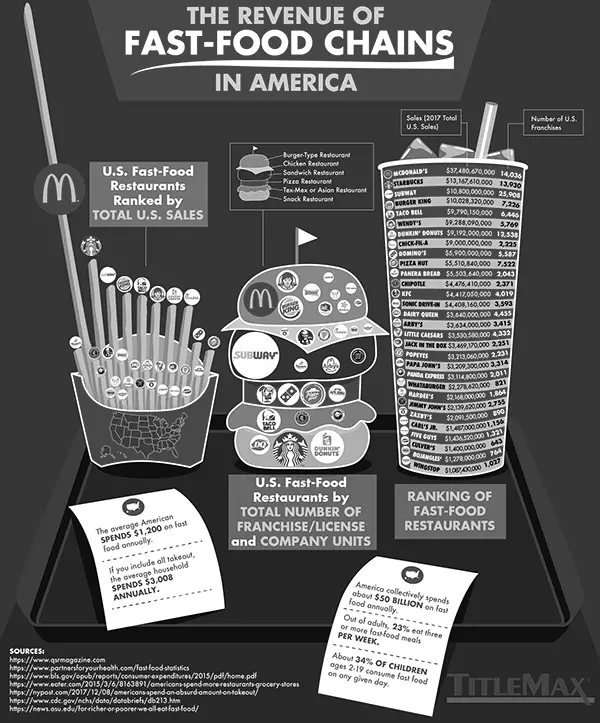
People eat fast food because it’s convenient.
One study looked at why Americans choose fast food restaurants. Almost 600 adults and teenagers were interviewed. Most people cited convenience as the primary reason for eating fast food. But young adults were less likely to cite convenience for eating fast food than older people.
Many people view fast food as convenient because it’s cheap and quick. It’s quick and easy to prepare, which appeals to people who are always on the go. Fast food continues to play into this narrative by spending a lot of money on advertising and maintaining an overwhelming presence in the American culture.
Fast food consumption is typical among people from all income levels. More than half of the respondents reported eating fast food at least once in three weeks. In addition, those with higher family incomes consume more fast food than those with lower incomes. And more consumers are also concerned about their weight, so fast food has become an increasingly convenient option for many.
Fast food consumption varies by race, age, and income. In a survey of 5,000 Americans, forty-nine percent reported eating fast food at least once a week, 37.7% ate fast food monthly, and only twenty-one percent ate fast food daily. However, the percentage of Americans who ate fast food increased with family income. In the lowest tenth of the income scale, only 17.3% ate fast food daily, while almost three-quarters of middle and higher-income Americans ate it daily.
Although fast food may be convenient, it’s not healthy. Studies have shown that fast-food consumption is associated with various health problems. Diabetes, heart problems, and obesity are the most common consequences of fast-food consumption. The popularity of fast-food restaurants is mainly due to their convenient location.
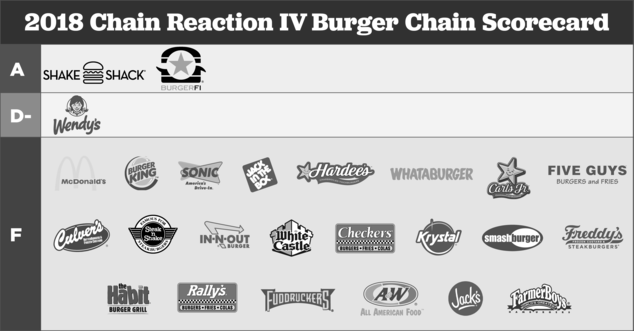
It’s cheaper than eating out.
Fast food restaurants are cheaper than dining out when you’re in a pinch. Inflation is a huge factor in food costs, but fast food prices are still lower than a typical grocery store meal. Some fast food chains, such as Taco Bell, Wendy’s, and Burger King, have low prices on their menus. Buying a burger from a fast food restaurant is often better than paying the total cost for a healthy, home-cooked meal. But while fast food restaurants can be cheaper than eating out, they usually offer a limited menu.
Fast food chains promote their food’s value as a bargain with consumers. Executives at fast-food chains, such as Mcdonald’s and Burger King, have pointed to these incentives as a reason to eat at their restaurants. They’ve even lowered prices, as customers can now redeem loyalty rewards and coupons to make their meals more affordable. But while consumers may be saving money at fast food restaurants, their overall value decreases as inflation continues to squeeze restaurant chains’ budgets.
While independent restaurants may be hesitant to pass on the higher costs to their customers, supermarket chains haven’t hesitated to raise prices. But this doesn’t mean fast food is the best way to save money. Even though fast food is often more convenient than cooking at home, eating out can be healthier.
The cost of eating out can add up quickly. A meal at a fast-food restaurant can easily top $10 if you don’t oversee your food costs. This price floor is a good baseline for eating out, but two people can easily spend three times that amount.
It’s located in food deserts.
Food deserts are areas where there are few or no grocery stores. They are typically found in low-income and minority communities. To be considered a food desert, a site has to have 500 or more residents who live more than a mile from a grocery store. According to the USDA, there are approximately 6,500 food deserts across the U.S. Some of these areas are much more likely to be food deserts than others.
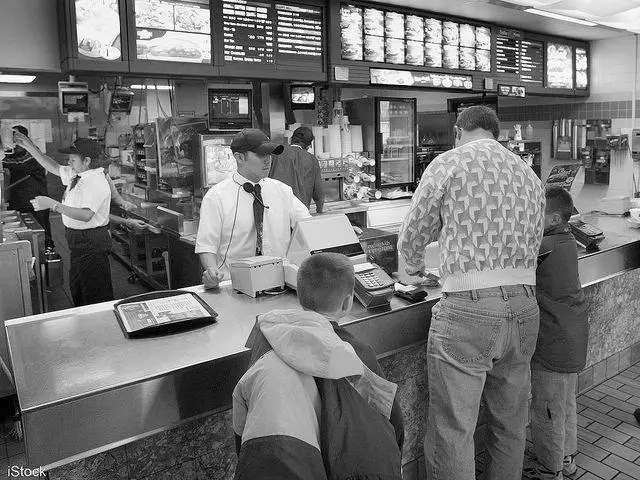
While the absence of affordable supermarkets generally characterizes food deserts, they also have a higher concentration of fast food restaurants and convenience stores. These food stores and restaurants sell processed, high-fat, and high-calorie prepackaged foods. As a result, residents of food deserts often have poor dietary habits and a higher risk for chronic diseases associated with obesity. The lack of access to healthy foods makes it difficult for many people to change their nutritional practices.
According to the USDA, food deserts affect 33 percent of American households or 23.5 million people. These people often do not have access to healthy foods, such as fruits and vegetables, and often live further from the nearest supermarket. The study results show that residents of food swampy and food desert communities tend to be more obese than those of similar zip codes.
These communities have difficulty buying healthy food and are disproportionately affected by gentrification. This phenomenon leads to the development of food mirages, where upscale grocery stores are located in food desert areas, resulting in higher prices for low-income residents. Some researchers consider food deserts a form of “food apartheid” because they affect minority and low-income communities. In addition, food deserts disproportionately affect indigenous people of the United States. More than 10% of American Indian and Alaska Native communities are 20 miles away from a grocery store. This problem cannot be solved simply by building more grocery stores, as people will continue to eat unhealthy foods.
It’s growing faster than other segments of the market.
As consumer expectations continue to evolve and the cost of living rises, the market for fast food has adapted. The growing popularity of these restaurants has increased competition, forcing significant industry operators to rethink their menu offerings to keep up with rising consumer expectations.
One of the main reasons for this growth is that consumers are looking for convenience and good taste. Fast food is affordable and saves both time and money. More than half of Americans eat fast food at least once per week. And while the recent pandemic has affected fast food sales, the industry has recovered remarkably.
The growth in this segment is expected to continue to increase. The growth rate for chain fast food restaurants is forecast to reach 5.9% between 2020 and 2027. Chain fast food restaurants include restaurants with five or more branches and subsidiaries. The leading chains include McDonald’s, Burger King, and Pizza Hut. Other notable chains in the U.S. include Trung Nguyen Coffee, Kebab Turki Baba Raffi, and Café Amazon.
According to the report, the growth of fast-food restaurants in the U.S. market is outpacing the development of other market segments. In 2015, the number of fast-food restaurants in North America grew by more than 30%, mainly due to the growing number of fast-casual restaurants in the region. The growth is attributed to introduction of new flavors and ingredients and the changing consumer preference.
Another factor contributing to the fast-food industry’s growth is the number of women in the workforce. Many women who work outside the home do not have the time to prepare meals at home. In these circumstances, women turn to fast food.
